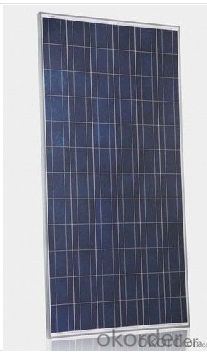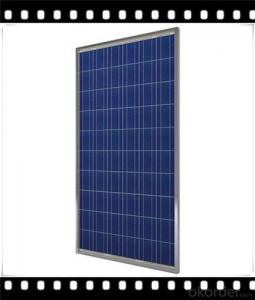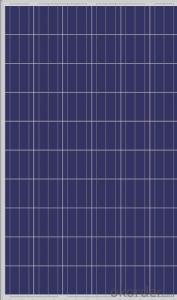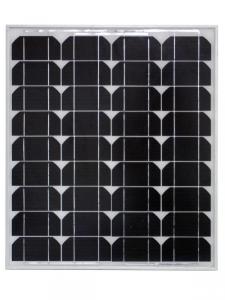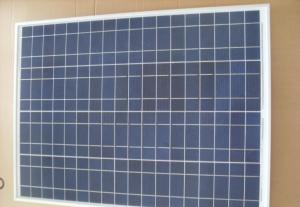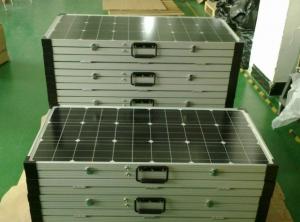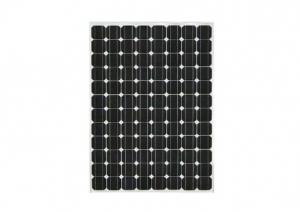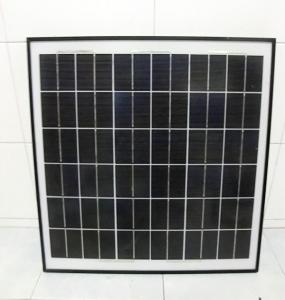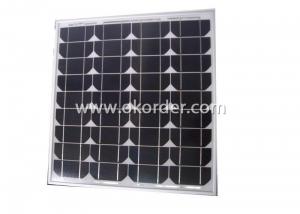Portable Solar Panels Kits - Poly Solar Panels 100-250W CNBM Brand
- Loading Port:
- Shanghai
- Payment Terms:
- TT or LC
- Min Order Qty:
- 100 carton
- Supply Capability:
- 100000 carton/month
OKorder Service Pledge
OKorder Financial Service
You Might Also Like
Description:
CNBM Solar is a world-leading and Vertical integrated manufacturer of high-performance with Silicon,
Wafer, Cells, Modules, which convert sunlight into electricity for residential, commercial, and utility-scale
power generation.
The capacity of CNBMSolar is reach to 1GW, and make sure each year our shipment capacity is more
Than 700-800MWs, at the same time, we have set up the largest solar power station with our partner
in Ukraine.
CNBM is a Quality + Service oriented company with“Excellence at Each Step” approach, composed of
the finest components from TUV and IEC-certified partners around the world, CNBM modules consistently
undergo a variety of trials at the company’s Test & Development Centre, ensuring peak performance
capabilities. The company is committed to develop and provide the world with clean and renewable energy
to ease the energy shortages as well as human kind’s impact on the environment.
Specifications
1. A grade solar cells
2. Factory directly supply
3. Have TUV, IEC, CE, ISO9001
4. 25 years life time, 5 years workmanship
5. 100W 1000*680*30
(2014 China OEM)solor panels with ISO9001 CE ROHS Certiciation
Our solar panel has always been a best seller. It features A-grade high efficiency monocrystalline solar cells and is assembled in compliance with Sungold’s unique quality standards. The solar panel not only is a preferred option for residential systems, but also proved to be a great match for commercial, large-scale and standalone applications.
Features
1.High reliability with guaranteed -3% to +5% power output tolerance, ensuring return on investment
2.High conversion efficiency based on leading innovative photovoltaic technologies
3.Withstands high wind-pressure and snow load, and extreme temperature variations
4.Attractive appearanceUnique frame design, high mechanical strength, and easy Installation

FAQ:What is your warranty system?
25years output warranty for no less than 80% of performance, 10years output warranty for no less than 90% of performance. Free from material and workmanship defects within 5years.
- Q: Can solar panels be used in deserts?
- Yes, solar panels can be used in deserts. In fact, deserts are ideal locations for solar panel installations due to the abundance of sunlight and limited cloud cover. The open and flat terrain of deserts allows for efficient placement and alignment of solar panels, maximizing their exposure to sunlight and increasing energy generation. Additionally, the dry desert climate helps in reducing dust and dirt accumulation on the panels, which can improve their efficiency.
- Q: So, I've seen cheap solar panel kits for sale from Harbor Freight, and regardless of whether or not I were to buy a set from them or someone else, I was wondering what the process of implementing a small-scale solar system into your household electrical system would be.I've read articles that started out too in-depth or were speaking of systems on a much larger scale.Can it be as easy as buying the panels and inverter, and plugging it into a socket, or is there more to it?Some of the articles I was reading had mentioned having to contract with your electrical supplier, having to have an electrician tie it all in in some special/ necessary way, using a battery pack (would this be necessary for a tied-in system?), or using the system to only power single items, like a water heater, or plugging items into a connected battery-pack, all of which I'm not sure is necessary or needed for what my goals/ means are/ would be.
- Take okorder /... This unit produces 45W for $90. Inverter is extra. Let's say this unit produces that amount of power for a full 2 hours a day, that's 45W * 2h = 540 Wh or 0.54kWh. If I save that from my electrical company, I would pay about 5 cents. $90 then takes 3800 days or 0 years. At that point, you haven't actually made any money, you've simply recovered what you paid out to buy the unit 0 years ago. Yes, electrical power prices will be going up over the long term but the output of this unit is also not going to be 45W over its lifetime (if it even lasts 0 years) so I really question the economics.
- Q: I'm just geting into electonics and stuff. So I am trying to make a simple USB charger. I'm looking for at least 4 volts output. What I've got is two solar panels (detached) a 4 AA battery holder, and a circuit board with an led on it (took the solar panels out of old lawn lights. I need more charge out of my panels (I think) so I tried attaching them. I soldered the positive wire from one to the positive connection on the other and negative wire to negative connection. After doing so and checking the multimeter, it says I have no output at all. How do you connect them?
- You will need to wire several cells in series to obtain the necessary voltage, and you may need to wire several sets in parallel to obtain the required current. Series: Connect the + lead of one cell to the - lead of the next. You may chain any number of these together this way, and the output voltage will be the sum of the output voltages of each cell. The output current will be the greatest current of each individual cell. Parallel: Connect the + leads of each cell together, and the minus leads of each cell together. The output current will be the sum of the output currents of each cell. The Output voltage will be the greatest voltage of each individual cell. Picture this: think of the series cells as a column, connected from top to bottom. Think of the parallel cells as a row, with all the tops connected together and all the bottoms connected together. To arrive at the required voltage *and* current, you will need an array of cells, in rows and columns. The voltage will be the sum of each column, while the current will be the sum of each row. Most solar panels are arrays of individual cells. The arrays are then connected in the same fashion to provide the necessary combination of voltage and current.
- Q: Can solar panels be used to power air conditioning or heating systems?
- Yes, solar panels can be used to power both air conditioning and heating systems. Solar panels generate electricity by converting sunlight into energy, which can then be used to power various appliances and systems, including air conditioners and heating units. This allows for more sustainable and environmentally friendly ways of cooling and heating buildings.
- Q: I am designing a solar panel but i need to have maximum power output.How can i optimize the equation for power Total power=voltage * current to get maximum power.
- first place the panel so it is at right angles to the solar rays. Make sure none of the panel has any shade whatsoever. For best results use motor drives to keep it in that position as the sun moves across the sky. For overall maximum versus time, you need to be near the equator. Solar cells have a high internal resistance, so for maximum power transfer, you need a load of that same resistance. A good charge controller will use DC-DC converters to provide that load. .
- Q: Can solar panels be used for powering a museum or cultural institution?
- Yes, solar panels can be used to power a museum or cultural institution. Solar energy is a renewable and sustainable source of power, making it an environmentally-friendly option for museums. By installing solar panels, these institutions can reduce their carbon footprint and lower their energy costs. Additionally, solar power can provide a reliable and consistent source of electricity, ensuring that the museum's operations are not disrupted during power outages or fluctuations in the grid.
- Q: Can solar panels be installed on a flat roof?
- Yes, solar panels can be installed on a flat roof. Flat roofs are actually a popular choice for solar panel installations because they provide an ideal surface for mounting the panels. The panels can be mounted using ballasted systems, which don't require any penetrations into the roof. This makes the installation process easier and minimizes any potential damage to the roof.
- Q: Can solar panels be used to power an emergency response center?
- Yes, solar panels can be used to power an emergency response center. Solar panels convert sunlight into electricity, providing a sustainable and reliable source of power. By harnessing solar energy, emergency response centers can ensure uninterrupted electricity supply, even during power outages or in remote areas. Additionally, solar panels are environmentally friendly and reduce reliance on traditional energy sources, making them a viable option for powering critical facilities like emergency response centers.
- Q: Aren't batteries bad for the environment?Toxic?Expensive? With small solar panels phones, iPod's, laptops other small electronics could be smaller, slimmer, more efficient cost people less to charge every day. Maybe a small battery inside as a backup and to store the Solar energy for night time. But overall, batteries should be optional. So big question:Why aren't electronics being produced with solar panels?
- Well if these things come up with the solar panel than no one can easily but it even run it because solar panels need constant light energy from the sun which consumes in their resources equipment. By the way these are very small things we should think about big like electricity generation still done by coal which is main reason for spreading pollution but now USA is planting solar panel plant which will help to reduce pollution and saving bills money.
- Q: How long does it take a 5 watt, 2 volt solar panel to charge a 2 volt R.V. battery?
- Most solar panels have something called a charge controller on them. This prevents electricity from going backwards from the battery to the panel. Solar panels are rated at 2V but they do put out a little more than that during full sun operation. You didn't specify the size of your battery but it really doesn't matter. It comes down to your consumption of power. If you are only charging the RV battery so it maintains a charge when you don't use it very much, a 5 watt panel is fine. It will charge the battery and keep the small drains on the battery from making it go dead ( the clock radio, the theft deterrent system, etc use power even when RV is off) But if you are using the battery to run things when you are parked, you probably don't have a big enough panel. If you use a 30watt fluorescent light and a 00 watt laptop, you need 30 watts of power saved up every hour in your battery and that's with no inefficiencies. So if your panel puts out 5 watts an hour and you are using 30 watts an hour, you need 30 watts/ 5 watts = 9 hours minimum of charge time to run your stuff for just one hour. You probably need a panel of around a 00 watts to get any meaningful use of your battery. Plus, you never want to run your battery to full drain because it ruins the plates inside the battery. Watts = volts x amps. If you have 2 volts panels, you would charge at 8 amps with a 00 watt panel. This is a good charge rate. Any more than this and you risk warping the plates with too much heat.
Send your message to us
Portable Solar Panels Kits - Poly Solar Panels 100-250W CNBM Brand
- Loading Port:
- Shanghai
- Payment Terms:
- TT or LC
- Min Order Qty:
- 100 carton
- Supply Capability:
- 100000 carton/month
OKorder Service Pledge
OKorder Financial Service
Similar products
Hot products
Hot Searches



